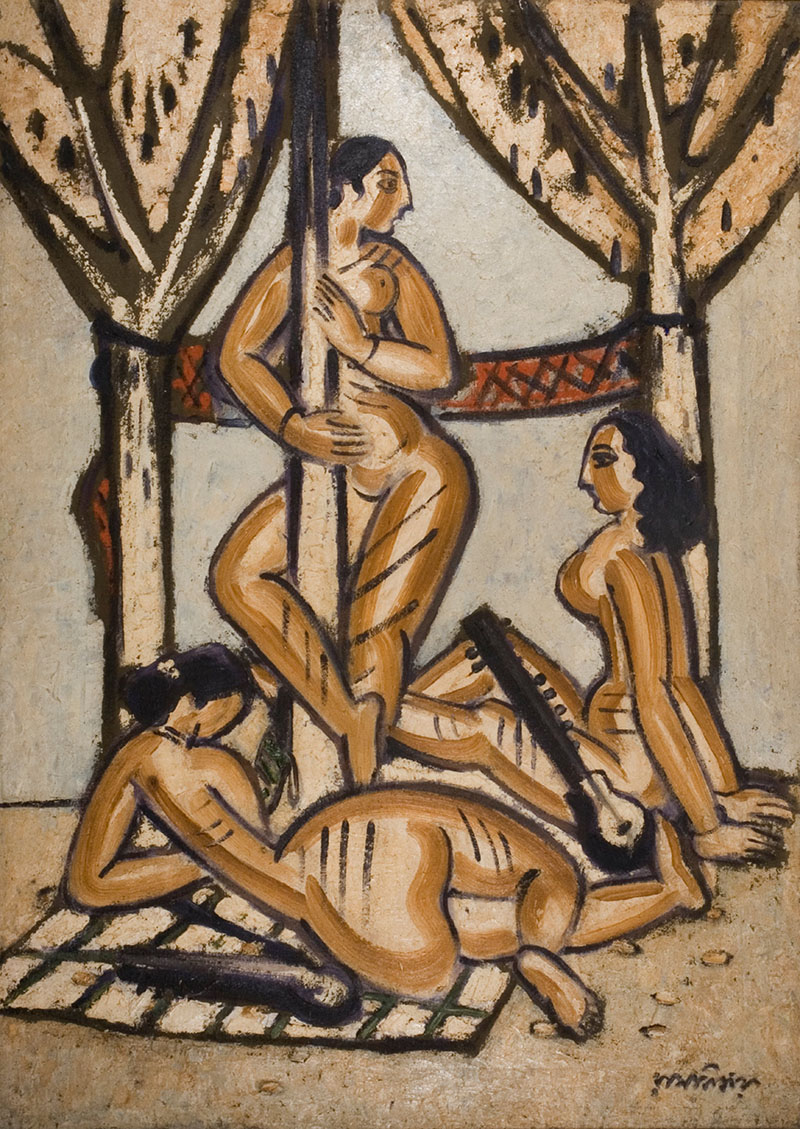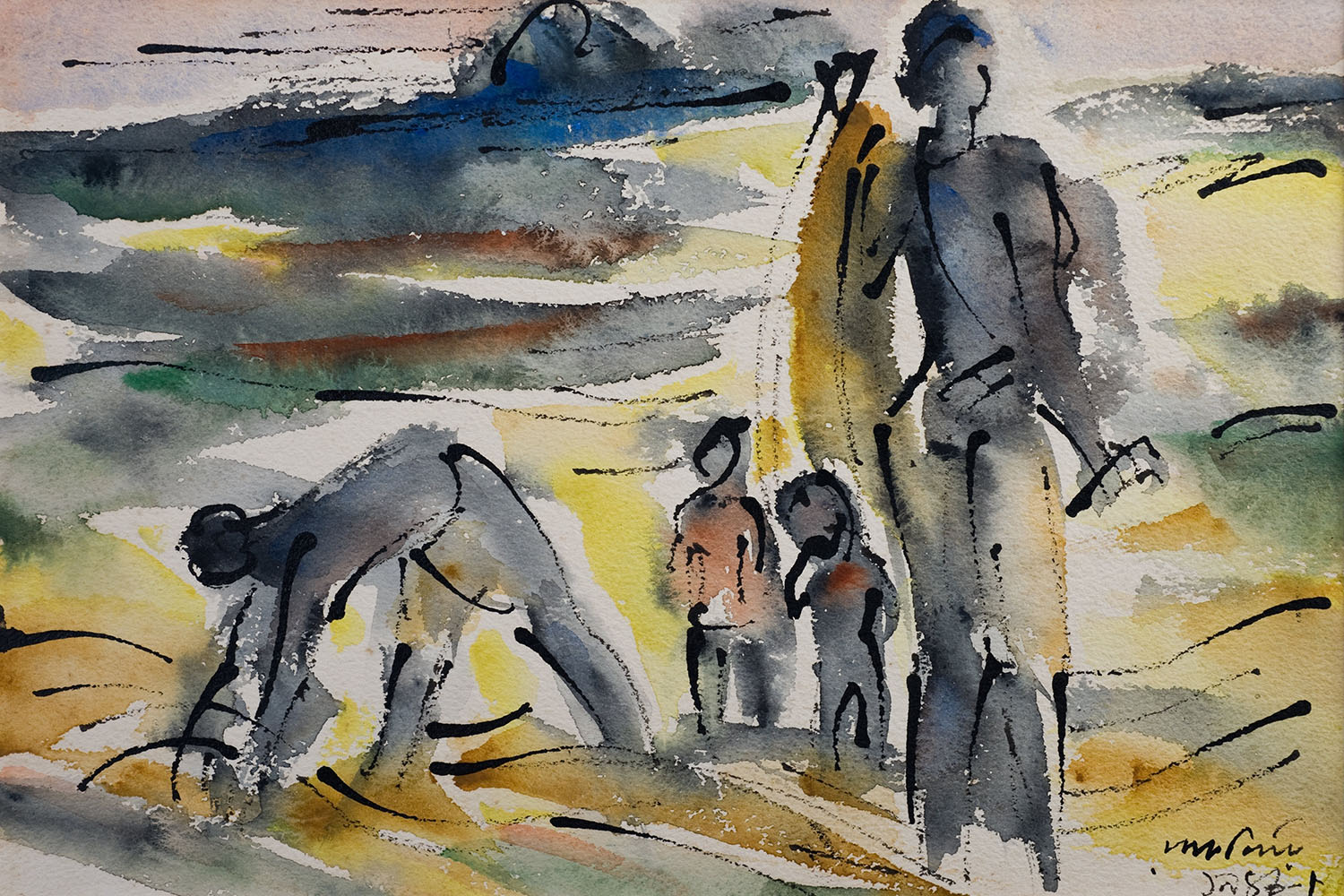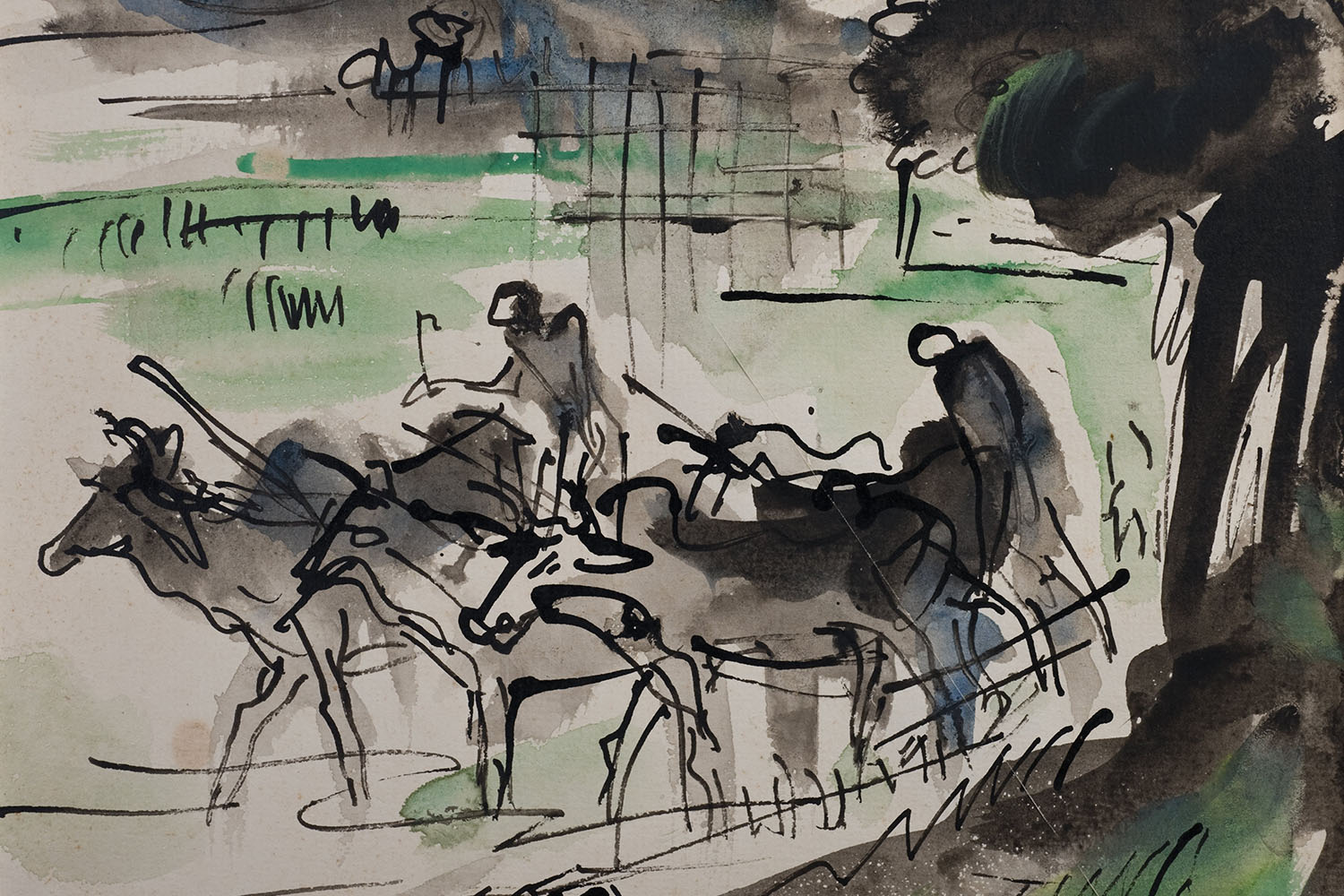Encyclopedia of Art > Articles
Ramkinkar Baij

A sculptor and painter known for his representation of rural life and the lives of marginalised communities, Ramkinkar Baij was born in Bankura, West Bengal, and orphaned at an early age. He was the first Indian sculptor to use cement, concrete and pebbles as a medium in his sculptures — primarily because of their affordability — lending his works a coarse, granular appearance.
Baij’s engagement with art began c. 1920, when he joined a jatra group and began painting screen and stage props. The Indian Non-cooperation movement, which arose while he was preparing for his matriculation examination at the National School, Bankura, pushed him towards nationalist thought, and some of his early sculptures depict freedom fighters who participated in the movement.
At the age of nineteen, his work caught the attention of nationalist leader and journalist Ramananda Chatterjee, who enrolled him at Kala Bhavana, Shantiniketan, in 1925. Baij spent the next three years at the institution, where his ideas continued to develop under the mentorship of Nandalal Bose, Rabindranath Tagore and the European sculptors Lisa von Pott and Margaret Milward. In 1928, after completing his studies at Kala Bhavana, Baij became a faculty member at the institution.
Although his early work was influenced by the Bengal School, he soon began depicting unconventional subjects. At Kala Bhavana, he studied under sculptor Deviprasad Roy Chowdhury and encountered the works of European avant-garde artists and sculptors. He also developed an interest in the labouring body in sculpture in the works of French sculptors Edouard Lanteri and Antoine Bourdelle and the treatment of materials such as bronze by Auguste Rodin. Another significant influence in Baij’s interests in rural subjects was the work of American sculptor Jacob Epstein, who incorporated methods such as rock-drills in his sculptures — a forerunner to Baij’s own experiments with cement, reinforced concrete and rubble in his works. Facilitating a deeper engagement with Tagore’s ideas, Baij’s work also began to reflect the influences of Humanism.
The Santhal community who lived on the outskirts of Shantiniketan were some of Baij’s earliest subjects and inspired two of his monumental sculptures — Santhal Family and Mill Call — which subverted the established norms of sculpture, which followed Romantic styles with delicate features. The backgrounds in his works feature thick impasto strokes that create a sense of the figures being knitted onto them. Baij also produced multiple portraits, including Pramod Ganguli (1935), Rabindranath Tagore (1940) and Binodini (1948/1949), often representing the whole body as opposed to just the bust in order to give the viewer a better sense of the subject. In 1955, he was invited by the Government of India to make two sculptures of a yaksha and yakshi for the building of the Reserve Bank of India, New Delhi.
Baij showed his work at the Salon des Réalités Nouvelles (1950) and the Salon de Mai (1951), Paris; Birla Academy of Art & Culture, Kolkata (1972); and the National Gallery of Modern Art (NGMA), New Delhi (2012, 2020). In 1970, he received the Padma Bhushan for his pioneering contribution to Indian art, and in 1976, he was made a fellow of the Lalit Kala Akademi and conferred the honorary doctoral degree of Desikottama by Visva-Bharati University. His works are part of the permanent collections of NGMA as well as other public and private collections.
Baij died in Kolkata in 1980.
First Published: April 21, 2022
Last Updated: July 26, 2023




